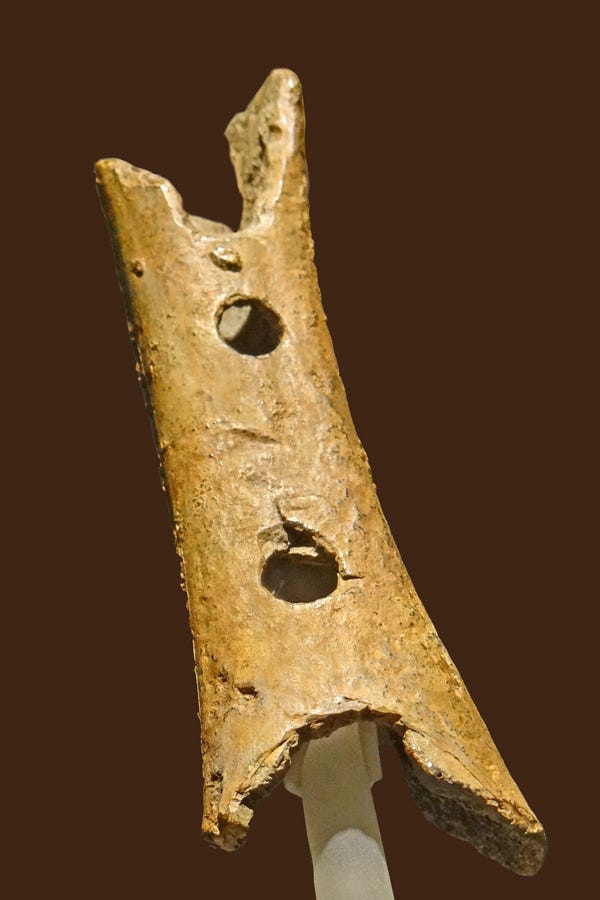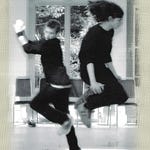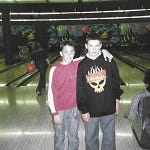This all starts, I think, with a post on a fan forum that no longer exists. I could go digging through the rubble on archive.org and try to dust down the precise phrasing, but I sort of like what the slow attrition of link rot has done to the thing I’m remembering. A few lines of text on a late-2000s message board have taken on some of the inscrutability of an archaeological artefact – perhaps of the kind which, in a common joke, is explained away as having ‘ritual purposes.’ Here’s what I remember, anyway.
Some time around 2006, I got into the Mountain Goats: an American band usually roughly slotted into the indie-rock niche, and centred on the songwriting of singer-guitarist John Darnielle. I found them completely by accident on a peer-to-peer file-sharing service, got heavily into their three most recent albums (Tallahassee, We Shall All Be Healed, The Sunset Tree), and started posting on the forums at mountain-goats.com, at a time when the band’s public profile was low-key enough that Darnielle himself could comfortably moderate the space. At some point within a couple of years of this – and certainly before 2018, when the forum links became fully defunct – somebody (not me) asked the singer a question. Something about which songs of his people would still be listening to in a hundred years.
This was the first space in which I’d seriously started to discuss with fellow listeners the art of the man who I’d recently decided was my favourite writer, so I paid attention to his answer. And with apologies to John himself for any unintentional paraphrase, here’s the gist of what I remember him saying: I’d be surprised if much of anything recorded today was being listened to in a hundred years, let alone my stuff. Not, I think, because of any sense that the work being produced around him wasn’t inherently worthy, but for the reasons already alluded to: data is lost. Snakes ‘slither … in the sun’ across Roman fora, in a jaunty 2020 update of French poet Lamartine’s Romantic vision of the ruins of the Colosseum infested with lizards. And the absolute acceleration of artistic production made possible by new channels of distribution in the later twentieth and early twenty-first centuries presents a clear danger, in terms of signal to noise, of any song, however beautiful, however meaningful, being lost beneath the shifting sands. The vast majority of human cultural production from any one slice of history is rarely preserved. Why should this survive?
And at the time, I thought: because I want it to. And I wondered if that was enough, if that made it good enough.
In the years since then, though, I’ve taken some comfort in the fact that many Mountain Goats songs themselves constitute small acts of remembrance for things which might otherwise be forgotten entirely. I’m thinking about thylacines, and the doomed Costa Rican golden toad at the razor’s edge of species extinction in ‘Deuteronomy 2:10,’ its ‘tiny song’ the only form of expression at its disposal to ‘claim my place beneath the sky.’ I’m thinking about ‘Your Belgian Things’: ephemeral objects carried out of a Portland flophouse by ‘guys in biohazard suits’ which our camera-clicking narrator transmutes into remnants of immense archaeological significance, ‘bones from deep down in the Fertile Crescent.’ I’m thinking about ‘script that made prominent use of a pentagram’; about Tollund Man; about Gene Loves Jezebel.1
So I wanted to start this project, which is itself a work of historical investigation – of Darnielle’s formation as an artist, and mine as a person – by identifying the first of many recurring themes in the Mountain Goats canon: a character’s desire to be remembered by leaving a mark on the world. A trained classicist, the songwriter is naturally interested in the excavation of history: the recovery of lost objects, lost lives, can at once reanimate the past and draw attention to our own mortality. They can be prompts for new artistic production, too: in the liner notes to Beautiful Rat Sunset, Darnielle rather charmingly thanks ‘Aeschylus, though he probably would have found this record confusing on a number of levels.’
Some art, after all, does last. My friend Rob is fond of pointing out the sheer sublimity of the fulfilled promise in Odes 3.30 by Horace - to whom Darnielle would dedicate a set of his own Transmissions three years later - as memorably rendered by Ezra Pound: ‘This monument will outlast metal and I made it.’ Anyone who’s taken an undergraduate class on Shakespeare might recognise the same idea in Sonnet 55 – ‘Not marble, nor the gilded monuments / Of princes shall out-live this powerful rhyme.’ This trope, known in literary studies as the immortality topos, fits into a long literary tradition of poetic voices calling out to the future from the fragile present: don’t forget me; I meant something; ‘I used to live here.’
In ‘Soudoire Valley Song,’ a Neanderthal dies at La Chapelle-aux-Saints cave in Southern France, and becomes the earliest figure chronologically to stake this claim in Darnielle’s body of work.2 The song takes inspiration from William Golding’s The Inheritors, a novel about a Neanderthal clan on the brink of being wiped out of history, but also from archaeological research. The ‘Old Man’ mentioned in the song is a specific reference to a ‘toothless Neanderthal elder’ discovered in 1908 with evidence of a ‘hard life… etched into [his] bones,’ whose long life and ‘remarkably intact body’ have been used to argue that Neanderthal groups could have manifested some kind of ethics of care and commemoration.3
In Jon Mooallem’s New York Times essay, ‘Neanderthals Were People Too,’ there’s a touching moment when, face-to-face with a dig site, the abstractions of paleoanthropology suddenly snap into the same kind of empathetic recognition: ‘what we were looking at were the remnants of a single event: a specific fire, on a specific night, made by specific Neanderthals’ who cooked ibex, mussels and nuts over an open flame, then made some tools before bed. ‘This wasn’t just a “hearth”,’ Mooallem realises: ‘it was a campfire.’
The Divje Babe flute.
I’ve spent much of my weekend marking undergraduate essays about Rose Kelleher’s wonderful 2008 sonnet, ‘Neanderthal Bone Flute.’ The poem also looks for connection between modern humans and the ‘young man, perhaps red-haired’ from what Darnielle calls a ‘hook off to the side’ in the story of our development, who might have worked a piece of bear bone into an ancient flute in the Divje Babe Cave in modern Slovenia. Darnielle and Kelleher alike both evoke the pathos of Neanderthal extinction, but while the poet frames as wishful thinking her desire for the bone found by scientists to be a genuine Neanderthal art object, the ultimate source of ‘the music in our marrow,’ the singer’s interviews indicate he’s keeping up with the field. Rebecca Wragg Sykes points to what she deftly describes as multiple potential ‘hybridising episodes’ between Neanderthals and Homo sapiens4: Darnielle told Pitchfork that mass extinction is ‘no longer the operating theory, but it was the one that inspired me.’ I love the Mountain Goats at least in part because you can count on Darnielle to know things, to say things like that.
Like us, Darnielle’s early hominins make weapons (‘Bang the small rocks on the big ones / Till the small ones are sharp and clean’), experiment with medicinal and hallucinogenic plants, and – in language surely very familiar to the former nurse who wrote the lines – assiduously tend to the needs of those few they hold close:
Take care of the Old Man
See if he’s in pain
Have somebody stay with him
Comfort him when he complains
What happens after his suffering has ended is at best ambiguous to these people (and Darnielle certainly seems to see them as people, who can form friendships and ‘dream pleasant dreams’): ‘Lead a long life if you’re lucky / Hope it never ends.’ But however they parse their elder’s passing, their culture faces a far more extensive erasure. No matter how far they’ve travelled from the theorised cradle of humanity, this is where it all stops: after the burial at La-Chapelle-aux-Saints, ‘the grass grows up to cover up / The firepit and the forge,’ symbols respectively of community and craft, ‘half a world away from the Olduvai Gorge.’ The Old Man’s gravesite is a commemoration, a bulwark against forgetting.
This newsletter, among other things, stems from an impulse to do something similar – to remember, and to make sense out of, what one prolific artist has put into the world, year by year across the course of my own life. John’s forum post suggests a scepticism about this kind of posterity, but that doesn’t rule out the power of trying your ‘tiny song.’ The voice of the Costa Rican golden toad might not carry very far, but ‘Deuteronomy 2:10’ inhabits and thus preserves its impulse to vocalise, to make it known that it existed at all: ‘No brothers left / And there’ll be no more after me.’ Maybe sometimes, when there are no more lasting traces, it’s singing where the salvage happens.
All songs referenced in this entry are in the Spotify playlist below:
Release information is as follows: ‘Soudoire Valley Song’ (All Eternals Deck, 2011); ‘Deuteronomy 2:10’ and ‘Genesis 3:23’ (The Life of the World to Come, 2009); ‘Your Belgian Things’ (We Shall All Be Healed, 2004); ‘Tollund Man’ (Sweden, 1995); ‘Abandoned Flesh’ (Goths, 2017); ‘The Best Ever Death Metal Band in Denton’ (All Hail West Texas, 2001); ‘The Ballad of Bull Ramos’ (Beat the Champ, 2015).
The song is styled 'Soudoire Valley Song,’ but the actual river in the Dordogne region of France appears to be the Sourdoire. The cave itself is pictured at the top of this post.
Rebecca Wragg Sykes, Kindred: Neanderthal Life, Love, Death and Art (Bloomsbury, 2020). pp. 74, 275, 286.
Kindred, p. 326.














